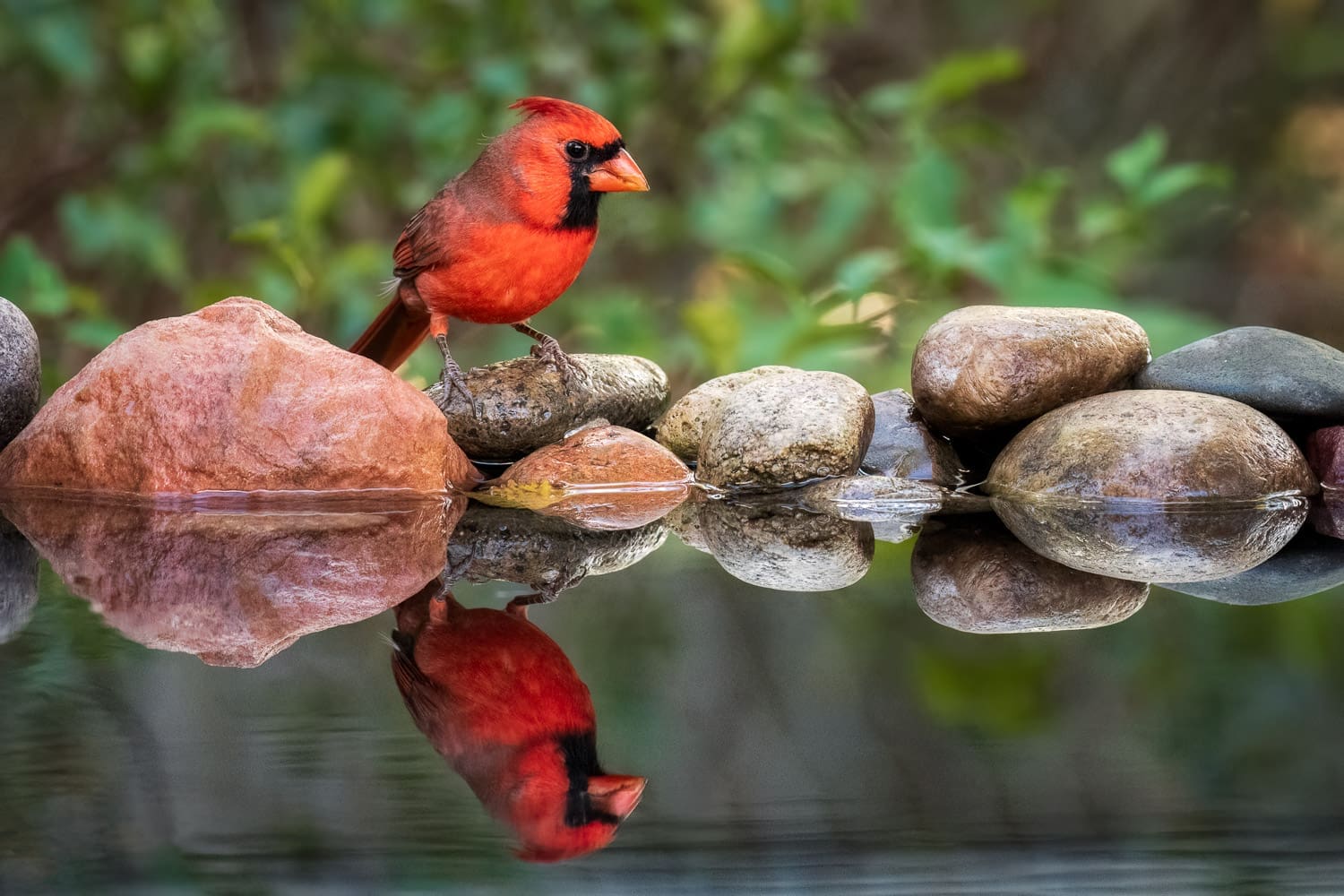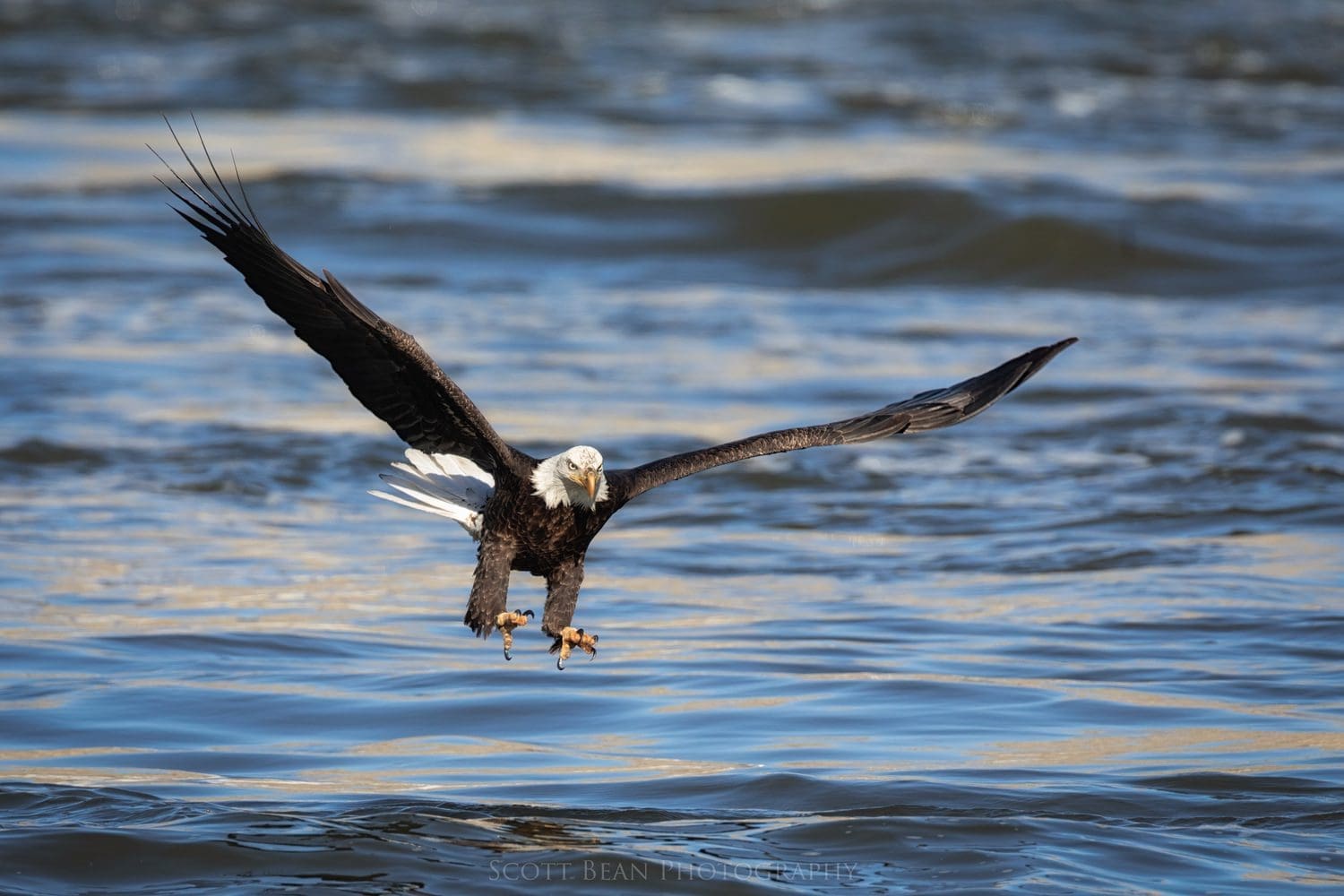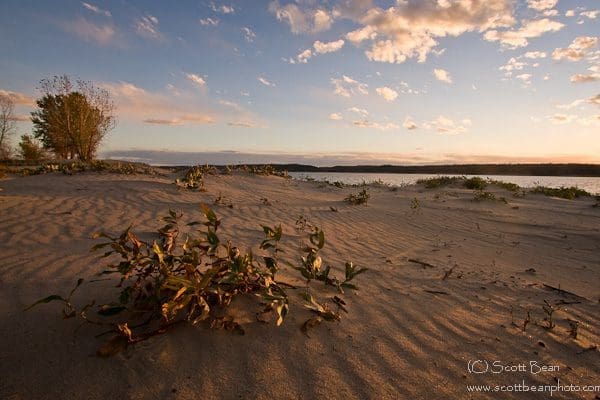
Fall is my favorite time of year for many reasons, but one of the main ones is the weather. I’ve never been a hot weather person and I love the cool temperatures of fall. We have been having some nice weather lately, but….we haven’t had hardly any cloudy skies the past couple of weeks. Almost every evening has been completely clear. I don’t want to complain about nice weather, but I’ve really been wanting some clouds to show up in the evening. What is wrong with a clear sky? Well nothing really is wrong, it is just, well, bland (photographically speaking). So tonight when I noticed clouds still in the sky, I took a break from editing my ‘road trip’ photos and headed out to Tuttle Creek Lake as fast as I could. Most of Tuttle has very rocky shorelines, but there is one section that has some sandy beaches and I’ve been wanting to get back there sometime this fall. So tonight was the night!
There is usually some great side light at this area as the picture above shows. What I was really interested in was getting a picture of the sunset over a nice still lake. Way too much wind tonight for that though, the lake was still showing white caps when I got there.
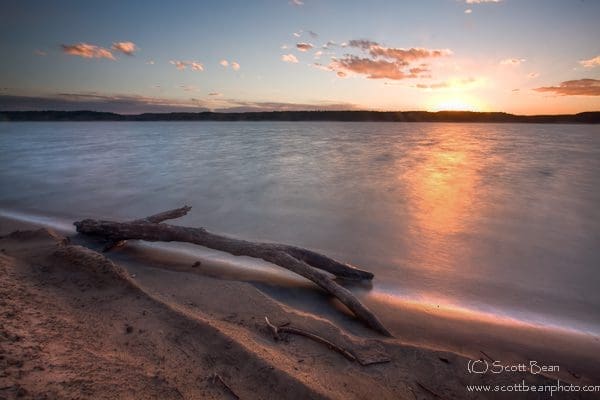
To reduce the waves in the water and get a smooth surface on the lake, I needed to use a long shutter speed. In order to get the longest (slowest) shutter speed I could, I set my ISO as low as possible (100) and stopped my lens down as far as I could (f22). This still didn’t give me a very slow shutter speed, even with a circular polarizer filter one (which reduces the amount of light entering the camera by 2 stops). To reduce my shutter speed even slower, I used a neutral density filter, which is just a shaded piece of glass. This filter also reduces the amount light entering the camera so my shutter speed dropped even longer. Now I was shooting with 4 to 10 second exposures, long enough to blur the wave action of the lake and create a smoother surface. The photo above is a HDR shot with 3 different exposures combined, with shutter speeds ranging from 4 to 8 seconds.
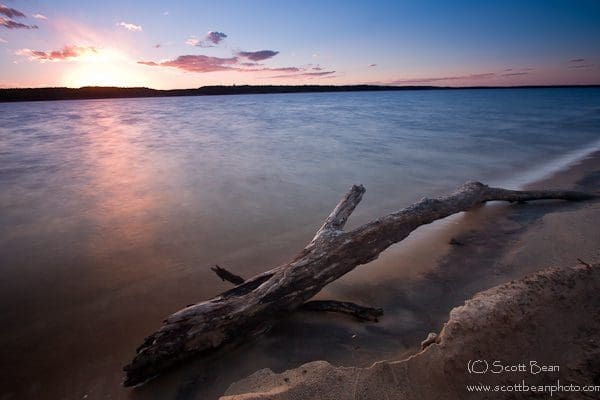
This photograph is a single exposure with a shutter speed of 4 seconds. Compare the surface of the lake to the photograph below, which was taken with a shutter speed of 1/8″. You can see how the slower shutter speed smoothed out the surface of the lake.
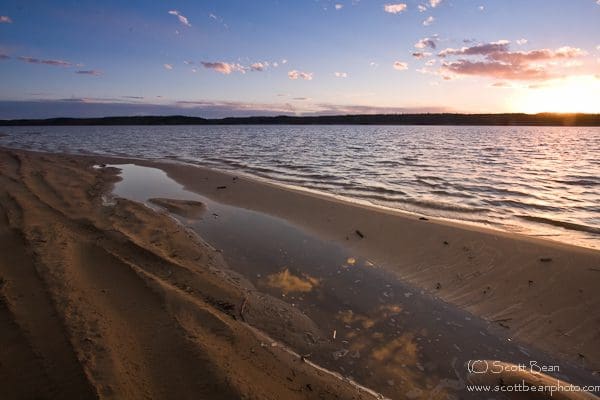
As I was headed back to my vehicle, I stopped for one last series of shots of some vegetation growing along the shore.
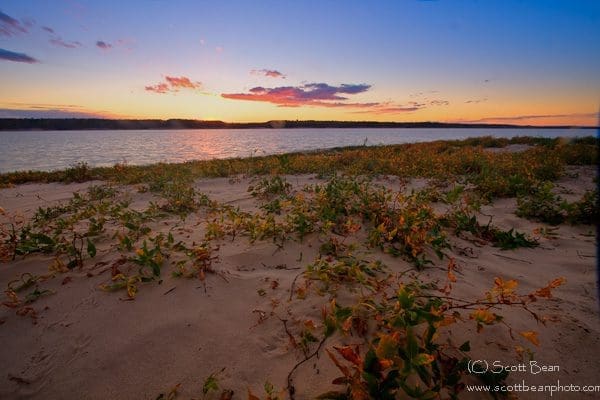
I really liked the colors starting to show up and how it matched the last of the color in the sky. I even managed to remember to just spend some time watching the sky and listening to the sound of the waves. At this point I was really glad the lake wasn’t still, I enjoyed hearing the sounds of the lake. Good thing I had my neutral density filters with me, I got to have my still lake and listen to its sounds too!
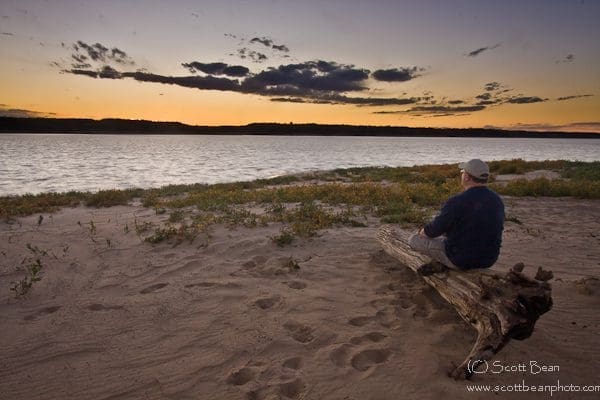
Hope you find some time to watch a sunset and listen to a lake this week too!

